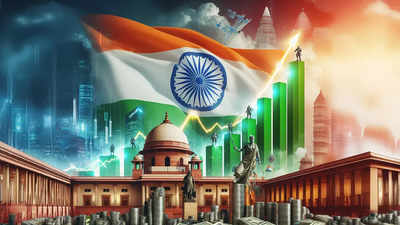India Poised to Become Second Largest Economy by 2031, Largest by 2060: Michael D Patra

India Poised to Become Second Largest Economy by 2031, Largest by 2060: Michael D Patra
New Delhi, July 15, 2024 — In a bold and optimistic projection, Michael D Patra, the Deputy Governor of the Reserve Bank of India (RBI), has predicted that India could emerge as the world’s second-largest economy by 2031 and the largest by 2060. Speaking at an economic forum in New Delhi, Patra highlighted the inherent strengths and potential of the Indian economy, emphasizing the importance of strategic reforms and sustained growth.
Economic Growth and Potential
India, currently the fifth-largest economy, has been showcasing remarkable resilience and growth, especially in the wake of global economic challenges. Patra noted that India’s large and young population, burgeoning middle class, and rapidly expanding digital infrastructure are key drivers of this potential growth. The country’s demographic dividend, with a significant portion of its population in the working-age group, presents a unique opportunity for economic expansion.
”India’s economic potential is unparalleled, given its demographic advantages and the ongoing structural reforms aimed at enhancing productivity and competitiveness,” said Patra. He emphasized the need for continued focus on education, skill development, and infrastructure to harness this potential effectively.
Key Drivers and Reforms
Patra outlined several factors that would contribute to India’s economic ascent:
-
Demographic Dividend: With a median age of around 28 years, India has one of the youngest populations globally. This demographic advantage, coupled with effective education and skill development programs, can significantly boost economic productivity.
-
Digital Revolution: India’s rapid digital transformation, driven by initiatives like Digital India, has created a robust ecosystem for innovation and entrepreneurship. The widespread adoption of digital technologies is expected to enhance efficiency and create new economic opportunities.
-
Infrastructure Development: The government’s focus on improving infrastructure, including roads, railways, ports, and urban development, is crucial for sustaining high economic growth. Significant investments in infrastructure projects are expected to stimulate economic activity and create jobs.
-
Policy Reforms: Continuous economic reforms aimed at enhancing the ease of doing business, attracting foreign investment, and promoting manufacturing under the ‘Make in India’ initiative are pivotal. Reforms in sectors like agriculture, labor, and taxation are expected to further strengthen the economic foundation.
Challenges and Strategic Focus
While the outlook is optimistic, Patra acknowledged several challenges that need to be addressed to achieve these ambitious goals. These include managing income inequality, ensuring environmental sustainability, and addressing regional disparities. Additionally, the global economic environment, including trade dynamics and geopolitical tensions, could impact India’s growth trajectory.
”To realize our potential, we must adopt a holistic and inclusive growth strategy that addresses socio-economic disparities and ensures sustainable development,” Patra asserted. He also highlighted the importance of innovation and technological advancements in driving future growth.
Global Implications
India’s rise to become the world’s second-largest economy by 2031 and the largest by 2060 would have significant implications for the global economic landscape. It would mark a shift in economic power from the West to Asia, with India playing a crucial role in global trade, investment, and geopolitics.
Economists and analysts globally are watching India’s economic journey closely, recognizing the country’s potential to reshape the global economic order. As India continues to implement strategic reforms and leverage its innate strengths, its trajectory towards becoming an economic powerhouse appears increasingly plausible.
Conclusion
Michael D Patra’s projections have infused a sense of optimism and ambition within India’s economic discourse. As the nation embarks on this transformative journey, the world will be keenly observing India’s progress towards realizing its goal of becoming the largest economy by 2060.